Gardening in September
September marks a significant transition in the gardening calendar as summer begins to fade and fall approaches. This month is an opportune time to plant, maintain, and prepare your garden for the cooler months ahead. Here’s an extensive guide on what tasks to focus on in your garden throughout September to ensure it thrives.
Establish New Trees and Shrubs
September is one of the best months for planting trees and shrubs. The cooler weather and increased moisture create ideal conditions for these plants to establish strong root systems.
Why Fall is Ideal for Planting
When you plant trees and shrubs in September, they benefit from less stress compared to the hotter months. The cooler temperatures help reduce transplant shock, allowing them to establish roots before winter sets in.
Effective Planting Techniques
- Timing is Key: Aim to plant earlier in the month to allow enough time for root establishment before the ground freezes.
- Site Preparation: Clear the planting area of any debris and weeds. Dig a hole that is twice the width of the root ball to encourage outward root growth.
- Water Thoroughly: After planting, ensure you water deeply to settle the soil around the roots and promote moisture retention.
Choosing the Right Varieties
Selecting the right trees and shrubs for your climate and garden conditions is crucial for long-term success.
Factors to Consider
- Climate Adaptability: Choose species that thrive in your local climate. Research native varieties that require less maintenance.
- Space Requirements: Consider the mature size of the plants to ensure they have enough space to grow without overcrowding.
Cultivate Roses for a Fall Display: Gardening in September
September is also an excellent time to plant roses. As temperatures cool, these beautiful blooms can establish themselves and prepare for a robust display in the spring.
Selecting Rose Varieties
When choosing roses, consider factors such as bloom size, color, and disease resistance. Some popular options include hybrid teas, floribundas, and climbing roses.
Tips for Successful Rose Planting
- Optimal Location: Select a spot that receives full sunlight for at least six hours a day, as roses thrive in bright conditions.
- Soil Enrichment: Amend the soil with organic matter, such as compost or well-rotted manure, to improve fertility and drainage.
- Mulching for Protection: After planting, add a layer of mulch around the base of the rose to conserve moisture and suppress weeds.
Plant Spring Bulbs for Future Blooms
September is the perfect time to plant spring-flowering bulbs like tulips, daffodils, and hyacinths. These bulbs will remain dormant through winter and burst into color as soon as the weather warms.
Planning Your Spring Garden
Planting bulbs now allows them to establish roots before the ground freezes, leading to a more vibrant display come spring.
Effective Bulb Planting Techniques
- Quality Matters: Choose firm, healthy bulbs from a reputable nursery to ensure successful growth.
- Planting Depth: Generally, bulbs should be planted at a depth of two to three times their height. A good rule of thumb is to plant them pointed side up.
- Spacing is Key: Follow spacing recommendations based on the bulb type to prevent overcrowding and ensure adequate air circulation.
Maintain a Weed-Free Garden
Weeding is a crucial task throughout the growing season, and September is no exception. As you prepare for fall, keeping your garden weed-free will pay off in healthier plants.
Understanding Weed Competition
Weeds compete with your plants for vital resources like water, nutrients, and sunlight. Regular weeding helps maintain a healthy garden environment.
Effective Weeding Practices
- Weeding After Rain: Weeding is much easier when the soil is moist, so consider weeding after a rainfall.
- Mulching for Suppression: Apply a layer of mulch around your plants to deter weed growth while retaining soil moisture.
- Root Removal: Make sure to pull out the entire root system of the weed to prevent regrowth.
Enrich Soil with Compost
September is an ideal time to amend your garden soil with compost. This addition enriches the soil, improves its structure, and prepares it for the upcoming planting seasons.
The Benefits of Composting
Compost is a rich source of nutrients that enhances soil fertility, encourages beneficial microorganisms, and improves drainage and aeration.
Steps to Amend Your Soil
- Even Distribution: Spread a layer of compost (about 1-2 inches) evenly over the soil surface.
- Incorporate Thoroughly: Use a garden fork or tiller to mix the compost into the top few inches of soil for better integration.
- Soil Testing: Consider testing your soil pH and nutrient levels to determine any additional amendments needed for optimal plant health.
Ensure Adequate Hydration
Even as the weather cools, plants still require sufficient hydration in September. Deep watering is essential for promoting strong root development.
Watering Techniques
Deep, infrequent watering encourages roots to grow deeper into the soil, helping your plants become more drought-resistant.
Effective Watering Practices
- Water in the Morning: Early morning is the best time to water, as it minimizes evaporation and allows plants to absorb moisture throughout the day.
- Use Soaker Hoses: Soaker hoses or drip irrigation systems deliver water directly to the root zone, ensuring efficient hydration.
- Check Soil Moisture: Regularly assess the moisture level by sticking your finger into the soil. If the top inch feels dry, it’s time to water.
Introduce Fall Color to Your Garden
As summer blooms fade, September offers an excellent opportunity to introduce new plants that will add color and interest to your garden as fall approaches.
Choosing Late-Blooming Plants
Incorporating late-blooming perennials and annuals can extend your garden’s color palette well into the fall season.
Colorful Planting Suggestions
- Asters and Mums: Consider planting asters, chrysanthemums, and sedums for vibrant late-season blooms.
- Combining Textures: Mix different textures and heights to create visual interest. Pairing tall spiky flowers with low-growing ground covers can be particularly striking.
- Foliage Plants: Don’t forget about colorful foliage! Plants like ornamental kale and Swiss chard can provide visual interest even as flowers fade.
Transition Indoor Plants as Temperatures Drop
As the nights grow cooler, it’s essential to bring tender outdoor plants back indoors. This is especially critical for tropical plants that are sensitive to frost.
Preparing Plants for Indoors
Before moving plants inside, inspect them carefully for pests and signs of disease.
Tips for a Smooth Transition
- Inspect Thoroughly: Examine plants for pests such as aphids, spider mites, or whiteflies. Treat any infestations before bringing them indoors.
- Gradual Acclimation: Gradually acclimate plants to indoor conditions by placing them in a shaded area for a few days before moving them to their final indoor location.
- Optimal Indoor Placement: Position your plants near bright windows to ensure they receive adequate sunlight during the shorter days ahead.
Harvest Your Vegetables and Greens
September is the peak time for harvesting many vegetables and greens from your garden. Enjoy the rewards of your hard work by collecting crops that are ready for harvest.
Maximizing Your Harvest
Regularly harvesting vegetables not only provides fresh produce but also encourages continued production from your plants.
Harvesting Tips
- Frequent Picking: For crops like tomatoes, beans, and peppers, frequent harvesting promotes further growth and keeps plants productive.
- Proper Storage: Learn the best storage methods for various vegetables to maintain their freshness. Some vegetables do well in the refrigerator, while others should be kept in a cool, dark place.
- Consider Late Plantings: It’s not too late to plant fall crops! Consider sowing quick-growing greens like kale and spinach for a late-season harvest.
Engage in Pest Management
As the growing season winds down, pests may still pose a threat to your plants. Monitoring and managing pest populations is crucial for maintaining a healthy garden.
Integrated Pest Management (IPM) Strategies
Using IPM techniques allows for a balanced approach to controlling pests without relying heavily on chemical solutions.
Effective Pest Control Practices
- Regular Inspections: Check your plants frequently for signs of pests or disease. Early detection is key to effective management.
- Encourage Beneficial Insects: Attract beneficial insects like ladybugs and lacewings to your garden. These natural predators help control harmful pest populations.
- Organic Treatments: If needed, use organic pesticides or insecticidal soaps that are less harmful to beneficial insects and the environment.
Plan for Fall and Winter Gardening
September is an excellent time to begin planning for fall and winter gardening. Preparing now can lead to a successful growing season ahead.
Considerations for Fall Planting
As you think about fall gardening, consider what crops and plants you want to include.
Tips for Effective Planning
- Research Planting Times: Different plants have varying timelines for planting. Research which varieties thrive when planted in late summer or early fall.
- Soil Preparation: Start preparing your soil now by adding organic matter and ensuring good drainage.
- Fall Cover Crops: Consider planting cover crops like clover or vetch to improve soil health and prevent erosion during the winter months.
Maintain Your Gardening Tools
As the gardening season starts to wind down, it’s essential to take care of your tools. Proper maintenance will extend their lifespan and ensure they’re ready for use in the spring.
Essential Tool Care Tips
Keeping your tools in good condition not only makes gardening easier but also enhances safety.
Tool Maintenance Practices
- Cleaning Tools: After a season of use, clean your tools thoroughly to remove dirt, rust, and plant residues.
- Sharpening Blades: Sharpen the blades of pruners, shears, and hoes to make cutting easier and more efficient.
- Storage Considerations: Store tools in a dry, sheltered place to prevent rusting and damage during the winter months.
Reflect on Your Gardening Successes
As September comes to a close, take time to reflect on your gardening achievements and challenges over the season. Evaluating your experiences can help you grow as a gardener.
Keeping a Gardening Journal
Consider maintaining a gardening journal to document your successes, challenges, and lessons learned throughout the season.
Benefits of Journaling
- Track Growth Patterns: Use your journal to record when plants bloom, when you harvested, and any pest issues encountered.
- Set Future Goals: Based on your reflections, set goals for the upcoming seasons to improve your gardening practices.
Conclusion
September is a month rich with opportunities for gardeners. From planting and maintenance to harvesting and reflection, this month sets the stage for a vibrant and productive fall garden. By focusing on these essential tasks, you can ensure that your garden thrives as summer transitions to fall, paving the way for a beautiful and fruitful season ahead. Embrace the changes of the season, engage with your plants, and enjoy the rich rewards of your gardening efforts!


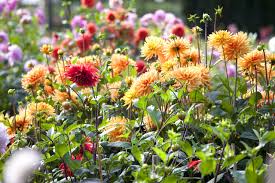
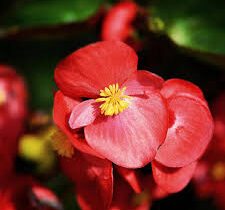
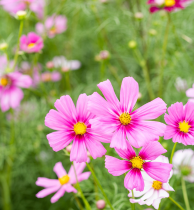
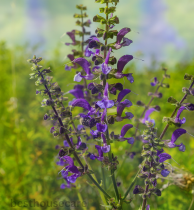
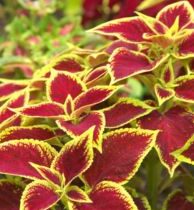
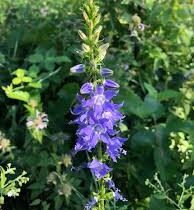
Leave a Reply
View Comments